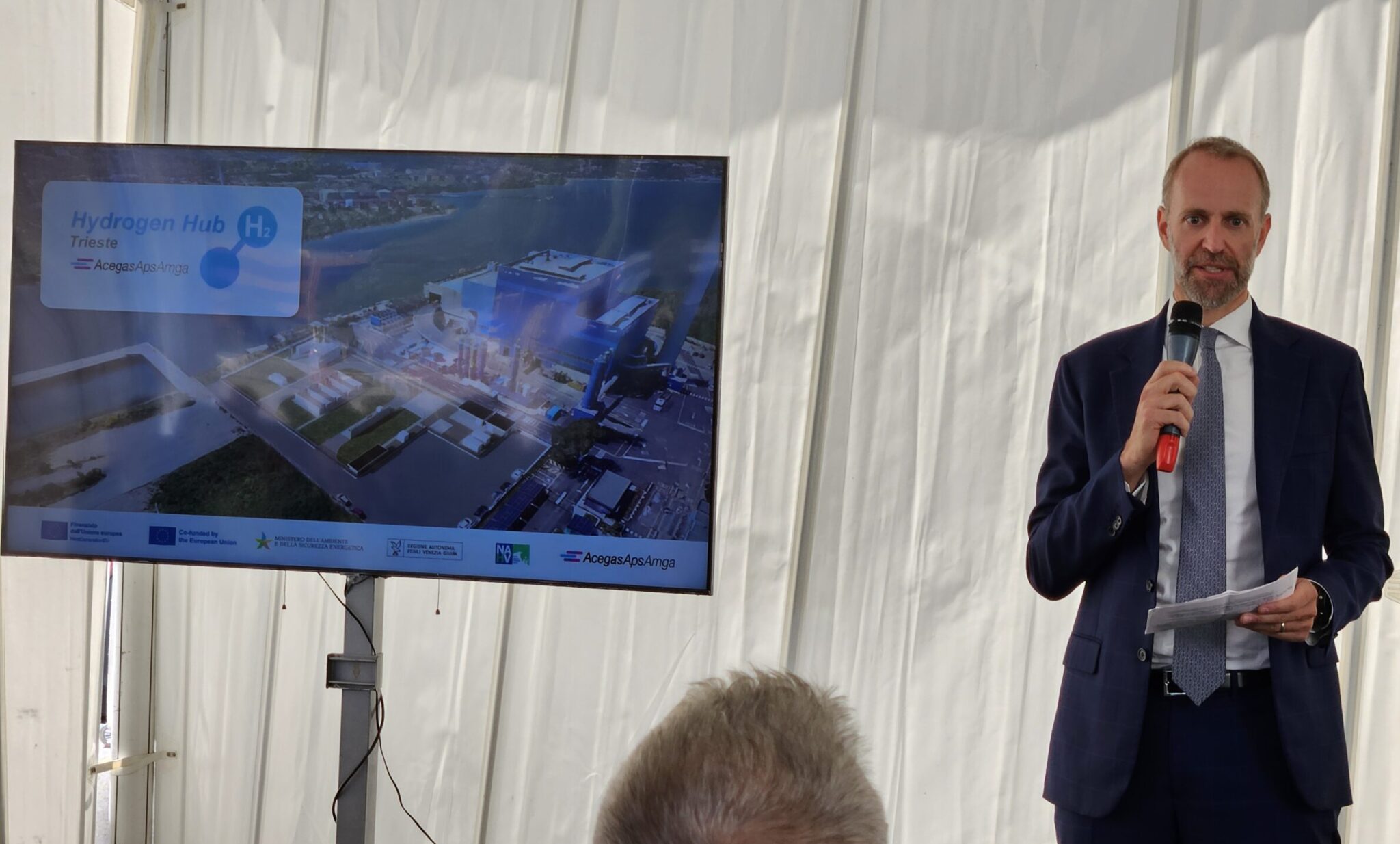
Trieste inaugurates new green hydrogen hub
Trieste has officially initiated construction on a new Green Hydrogen Hub, a key strategic initiative designed to accelerate the energy transition and decarbonize local transport and industries. The groundbreaking ceremony, held on September 18, 2025, marked a significant step toward a sustainable energy future, with top officials and industry leaders in attendance.
The project, spearheaded by AcegasApsAmga, is a concrete move toward creating a robust green hydrogen ecosystem, aligning with the EU’s climate goals and Italy’s national hydrogen strategy. The ultimate goal is to position Trieste as a leading hub for energy innovation.
A Project Focused on Circularity and Innovation
With a total investment exceeding €20 million, the hub is funded through Italy’s National Recovery and Resilience Plan (PNRR) (€15.8 million) and the Horizon EU program (€1.5 million). The project includes a 5 MW electrolysis plant and a 4.8 MW photovoltaic park.
A key feature of the project is its commitment to the circular economy. The electrolysis plant will be located next to Trieste’s waste-to-energy facility, allowing it to recover wastewater from the waste-to-energy process for use in hydrogen production. The solar park will also be built on a former industrial site, contributing to urban renewal.
Expected to produce approximately 370 tonnes of hydrogen per year, the hub will cover the entire value chain—from production and storage to distribution—to create a local market for renewable hydrogen. The plant is scheduled to begin operations in 2026, meeting the PNRR’s demanding deadlines.
Collaboration Beyond Borders
The Hydrogen Hub Trieste is a testament to effective public-private collaboration and an integrated, multidisciplinary approach. This initiative is also a pivotal component of the North Adriatic Hydrogen Valley, Europe’s first cross-border hydrogen agreement, which includes the Friuli Venezia Giulia Region, Slovenia, and Croatia. This wider collaboration involves 37 organizations and 17 pilot projects, aiming to produce 5,000 tonnes of hydrogen annually.
According to Sergio Emidio Bini, Regional Councillor for Economic Development and Tourism, the project shows that a careful, collaborative, and transparent governance model can lead to swift implementation. Roberto Dipiazza, Mayor of Trieste, emphasized that the project is a result of public and private sectors joining forces for the collective interest, further solidifying Trieste’s growing role in Europe’s energy landscape.
Carlo Andriolo, CEO of AcegasApsAmga, summarized the hub’s significance, stating that it’s more than just a production plant; it’s about creating a "true local ecosystem" to accelerate the energy transition.
